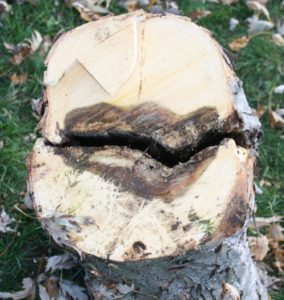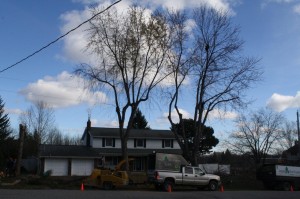Lion-tailing- Why it’s wrong and how to fix it
What is it? The over-pruning of a tree by removing the majority of the interior branches leaving only the terminal leaves (like the tuff of the lion’s tail.)
Why is it wrong?
- reduces the trees food supply by removing a large percentage of the leaves used for photosynthesis
- the over pruning causes a stress reaction called “epicormic sprouting” , “water sprouts” or “suckers”, causing a flush of branches along the trunk and limbs. This leads to weak branch unions and poor overall structure.
- the long, leafless branches create a lever which when inflicted with wind, snow or ice are prone to breakage and splitting .
What can be done? A tree can recover from lion-tailing if the sprouts are allowed to develop into branches and then reduced slightly and spaced along the branch.
Call an Expert! A certified arborist will not recommend Lion-tailing and will prune trees for maximum health and safety according to ANSI standard.

An example of the negative effects of lion-tailing. Due to the increased leverage of the long branch, the branch has split due to pressure between the compression and the tension wood.

Logan Tree Experts works on restoring a maple that had been lion-tailed. They perform selective pruning of the epicormic growth in order to re-establish a healthy structure and stronger branch unions. The installation of a structural cable was also necessary to dampen the bending and twisting of the trunks .This is a gradual process that could take many years.

